Skidder Safety and Efficiency: A Discussion Leader's Guide
ID
420-122 (BSE-288P)

This handbook is designed to accompany the Skidder Safety and Efficiency training DVD available from Virginia Cooperative Extension www.ext.vt.edu, Forest Resources Association www.forestresources.org, and the Virginia SHARP Logger Program www.sharplogger.vt.edu. The following pages contain a transcription of the video narrative, along with suggestions for discussion topics.
Introduction
As time has passed, we have improved the way logs are moved from the woods to the deck. These days in the South, most logging operations use either a cable skidder or grapple skidder to transport logs through the woods. Operating the skidder safely and efficiently will greatly improve the success of any logging operation.

Skidding and the Environment
Loggers should conduct a preharvest plan before cutting down the first tree. A preharvest plan is critical to the success of any logging job and can also add to the safety of the operation.
When you can work with a plan, you’re not forced to react to a lot of variables that can play into harvesting a sale. Variables such as a landowner may suddenly change their mind and you aren’t actually going to cut that timber. You can have the weather change in such a way that the ground conditions won’t let you operate. Markets can change rather quickly and that can force you to cut one type of timber versus another. So, if you have the job planned out, then you can make decisions based on that plan rather than being forced to react to these conditions that are really out of your control.
I have found even with contractors when I’ve talked with them, they all agree that when the finances get tight, then safety tends to be the first thing to get skipped in order to make up that financial dollar. To have a contractor working as efficiently as possible, it really needs to be done according to a plan. It’s very difficult to keep all of your personnel and all of the equipment running at an optimum rate if you are reacting rather then making decisions based on a plan.
– From an interview on preharvest planning with John Adler of Northeast Woodland, Inc.
A preharvest plan begins with gathering maps and walking the tract. Learning the lay of the land will save you time, money, and stress. Find a good place for your log deck, and make note of control points such as wetlands, rock outcrops, gas lines, and other obstacles. Designate skid trails.

Locate and mark the streamside management zones and stream crossings. Decide what materials you will need to cross the stream, such as culverts, rock for a ford, poles, geotextile, or bridges. Pick a location where your skidder can approach the stream at a 90-degree angle if possible. Follow your state best management practices (BMPs) guidelines if you have any questions on water quality.

Stop the video and ask the audience members the following questions:
- What are some examples of best management practices?
- Why is it best to approach streams at a 90-degree angle?
- What does it mean to designate skid trails?
Best Management Practices are absolutely essential for a successful, profitable, and also safe logging job. No matter where you are in your state, be it the mountains, piedmont, or even the coastal plain area, BMPs mean you need to do some prior planning. You need to be out in front of your harvesting operation and start to plan your harvest for a particular tract. You need to look at things like topographic maps. You need to talk to the landowner about the soils on his property. Are they soils that are well drained? Are they soils that retain moisture? Which also is going to take in the effect of weather. Weather is a very important aspect as far as BMPs are concerned. Reason is, obviously, if you have wet weather soils, you’re not going to want to be out harvesting during the wetter times of the year. It may be a job you are going to want to save until later on in the summer or a dry period in the fall. Conversely, if you have an upland situation where the soil is well drained and weather is not a factor, then it’s a good possibility that you’re going to be able to go out and harvest that area at your discretion.
BMPs are also important when it comes to the water quality of the area. Water quality in a lot of states is absolutely a mandatory thing of harvesting that is required by law that you adhere to. But, in Virginia, water quality is a law- driven aspect of forest harvesting. You want to make sure that in your planning and in your harvesting that water quality is always maintained.

The Skidder is an absolutely wonderful tool for forest harvesting without a doubt. Without a doubt it makes your job easier, it increases your profitability, and it’s a wonderful tool that was invented to extract logs from the forest. Conversely, it also can be a very damaging tool, especially when it comes to water quality.
One thing you want to make sure you do is that you preprogram or preplan your stream crossings. It is absolutely essential that you maintain the integrity to make sure you maintain water quality. In Virginia we prefer to use portable bridges. Portable bridges are a wonderful way to cross a water channel or even a slight wetland area where you need to get across …

Stop the video and ask the audience members what is wrong with the picture. [The strap used for the step is broken.]
… and still maintain the integrity of the stream and the water that flows beneath it. Portable bridges are easy to install and they are easy to extract with a minimal amount of soil disturbance.
BMPs are absolutely essential to a successful project to maintain the integrity of forestry in preserving the water quality in your area. If you have any questions about BMPs, BMP regulations, or water-quality regulations in your area, make sure you contact your local state forestry agency or your local landowner assistance program forester for the forest industry in your area.
– From an interview on Water Quality with Joe Lehnen, Area Forester with the Virginia Department of Forestry
Skidding Safety
Although increased mechanization, safety awareness, and accident prevention have made logging safer, it is still one of the most dangerous jobs in America. Four of 10 logging injuries occur to equipment operators, many of whom are skidder operators. About one-third of these injuries occur while the operator is performing maintenance or repairs on his machine. Here are a few thoughts about safely operating skidders that will help you avoid becoming a statistic.

Personal protective equipment (PPE) is mandatory and should always be used by all loggers. Properly used, it can greatly reduce the number of logging injuries. PPE is as important to logging operations as the feller-buncher, skidder, and loader. Properly protected and trained workers have better work habits, better attitudes, and produce more wood at lower costs.
There are different types of PPE that should be worn with different logging activities. OSHA requires that all loggers wear hard hats and foot protection. Eye protection and hearing protection are required in certain conditions if a hazard exists and hand protection is required when operating a cable skidder. Frayed or broken wire strands can cause damaging hand injuries.
Put on your PPE before beginning work each day. Being a professional logger means wearing safety equipment every day. You can’t be a pro without being safe, and you can’t be safe without being a pro.
After putting on your PPE, conduct a pre-operations check before climbing into the machine. Use extreme caution when checking any pressurized system such as hydraulic or fuel systems as a fluid injection injury can occur. Check fluid levels, tires, attachments, and fire suppression equipment. Check to make sure the equipment guards are in place and free of chips, limbs, and other debris. Inspect the engine compartment daily and clean as needed. Debris such as leaves and pine straw can get drawn into the compartment and be a fire hazard.
Exhaust systems must be in service with no holes or leaks, and must point away from the operator. Repair any defects such as leaking or loose hoses, guards, handholds, and so forth before operating any equipment.
Each machine must have two operable exit doors or hatches. Do not block or tie any door shut. Only trained operators can run the machine, and no one under 18 is permitted. Do not alter or disengage back up alarms on the skidder. Ensure they are in proper working condition. If you have any questions about repairs or equipment operations, check the operator’s manual for the machine. It is an OSHA requirement that each piece of equipment have an operator’s manual on the job site.

Nearly one-half of the injuries suffered by equipment operators result from slipping and falling while getting on or off the machine or while working on the machine. Loggers can protect themselves against slip-and-fall accidents by using the three-point mount and dismount technique. This means that two feet and one hand – or two hands and one foot – are touching the machine at all times. This is the same technique used by rock climbers. Exit the skidder the same way you entered it, facing the machine. Never jump out of the skidder cab onto the ground. Don’t mount or dismount a moving machine, and no outside riders allowed.
All skidders are equipped with either a step or strap as the bottom step. This should always be in place on the machine. If it gets broken or torn off, repair it immediately.
Once inside the skidder cab, always wear your seat belt. Keep your head, hands, arms, and legs inside the operator’s compartment. And, only operate the controls while seated in the machine. It is a good idea to have a first-aid kit and a charged fire extinguisher in the skidder cab with you.
Skidders are equipped with a structure that protects the operator against falling overhead hazards, rollover, and projectiles. Never alter or weld on the protective structure. Doors are present to protect the operator in case of a rollover or projectile.
Skidders are equipped with several safety systems. These may include the seat belt safety switch, brake pedal switch, and master disconnect. Although it may be tempting, do not override the safety systems.
The operator must make sure the area is clear before starting or operating the skidder. Line-of-sight is very limited on skidders, and you may have difficulty in seeing ground personnel due to blind spots on the equipment. The grapple arm assembly and front blade impede the direct line-of-sight if ground personnel are too close to the front or back of the skidder. It’s a good idea to have everyone on the logging job wear some sort of high-visibility clothing!
Remember to raise the grapple before moving out. Keep the blade, grapple, and rigging clear of the ground while skidding or moving. This will prevent damage to the equipment and also allow you to have a clear path of visibility.
Operate the skidder at proper speeds for the load, weather and ground conditions. Never overload a machine. Carry a load that is safe, within the capacity of the machine, and suitable to the terrain.
Position the load to prevent swaying or bumping against the skidder butt plate. With a grapple skidder, grip the load about three feet from the butt ends of the logs.

Maintain as level a position as possible, avoiding steep slopes. Never skid across the slope or at sharp angles. Be cautious of load hang-ups that can damage the grapple, cable, chokers, or cause injury to other workers.
Know where other crew members are at all times. Maintain audio or visual contact by using a radio or hand signals. Keep a safe operating distance – at least two tree lengths – from other workers and machines.
Always look behind before backing the skidder. Watch for people, stumps, pipelines, and other obstructions. Make note of overhead utility lines, dead snags, and even sudden changes in weather. Drive defensively – think ahead and anticipate hazards.
Sometimes it seems like there is always an obstacle in the way. Maintain skid trails by removing hung trees, spring poles, logs, and other obstacles. Flag hazardous trees to alert others. Assess each tree individually. Some trees will need to be pulled down, and others pushed.
Whenever the machine is parked and no operator is in the cab, turn off the ignition and lower the grapple, blade, and so forth. Park on level ground and set the parking brake.
Now, let’s review some additional safety tips to keep in mind when working with cable skidders.
- Remember to always wear gloves when handling wire, ropes, or cables.
- Inspect cables and chokers for wear and damage.
- Set chokers on the log butt end unless it is safer to skid top first. Never set chokers in the middle of a log.

Discussion. Stop the video and ask the audience members when it would be safer to skid top first?
- When hooking or releasing chokers, be careful of hands, fingers, feet, and legs. Do not unhook a tight choker.
- Never straddle the cable or log. Stand to the side when hooking or releasing chokers.

- If possible, keep your body on the uphill side of the tree while setting the choker.
- Choker setters should be aware of possible rolling rocks or boulders if on the downhill side of a skid trail. Aware- ness and body placement reduce the risk of injury.
- Use the winch to pull hung chokers loose, or to relieve a cable under tension.
- Have the choker setter stand a safe distance to the rear and side of the moving load. Stand behind a tree or other barrier if one is available.
- Keep the fairlead straight in line with the mainline when winching.
- Winch uphill on sloping ground. Avoid winching across the slope or at severe angles where possible.
- Ease the skidder forward during the final winching phase to allow proper bunching of logs and prevent binding to the rear of the skidder.

Discussion. Stop the video and encourage the audience members to share close calls and incidents of injuries, rollovers, and other skidder related accidents or injuries.
Lock Out / Tag Out

Next we’ll cover the lockout-tagout procedures for maintaining or servicing the skidder. When maintenance is required on a skidder or other piece of machinery, lockout-tagout will help ensure the safety of the mechanic and others nearby.
The purpose of lockout-tagout is to prevent unexpected movement or startup of the machine during service or maintenance. Accidents can be avoided by following a step-by-step lockout-tagout plan.
- Fully lower the blade or lifting devices to the ground. If they must be elevated for repairs, chain or block the blade or lifting devices to prevent injuries.
- Release hydraulic pressure by moving the controls.
- Set parking brakes and chock the wheels.
- Allow all moving parts to come to a complete rest before performing any repairs.
- Turn the ignition switch to the “off” position and remove the key. Put it in your pocket to prevent accidental start up.
- Turn off the master disconnect if your skidder has one.
- If you have them available, place a tag on the door to let others know the machine is out of service. This is the “tagout” part of lockout-tagout.
- Allow heat to dissipate before maintenance or repairs are performed on or near engine, hydraulic systems, and fluids.
- Disconnect the battery before performing repairs on electrical systems or welding on the machine.
- At this point the machine is locked out and at a zero energy state.
Once maintenance or service is complete, replace any guards or panels, remove blocks and chains, and follow start up procedures. These are the reverse steps of the shut down procedure.

Stop the video and note the skidder operator replacing cover panel without gloves on. This could result in some nasty hand cuts performing this task. Also, take caution from shutting or catching hands and other body parts in equipment doors.
These are basic guidelines for implementing the lockout-tagout standards. Contact applicable state and federal regulatory offices to obtain more details of the law and its requirements. You should review this procedure with everyone on your job at least once a year and document the training.

Stop the video and distribute the handout entitled Vehicle Lockout Procedures for Use with Equipment. Suggest that audience members share this resource with their crew members, and/or use it as a safety meeting topic.
Conclusion
Investing in safety pays off. Safety pays – accidents cost! Safe timber harvesting operations yield improved worker attitudes, safer work habits, fewer injuries, increased production, lower operating costs, and greater profitability. There is no substitute for safety on the job site!
The skidder is a critical part of the logging operation. By knowing the terrain and planning ahead, operating the skidder safely and therefore, efficiently, and following good maintenance procedures, you will greatly enhance the success of your logging operation.

Allow time for participants to share their thoughts about the video. Distribute the Forest Resources Association handout entitled Logging Safety in Rubber Tire Skidding. Suggest that audience members share this resource with their crew members, and/or use it as a safety meeting topic.
Time permitting, additional discussion might include safety at the landing area:
- Be cautious of and courteous to other workers.
- Approach the landing at a safe speed.
- If necessary, wait for landing workers to move a safe distance from the landing area, then proceed with the load.
- Use caution, and keep track of your load when turning on the landing.
- Winch or release the load only when all workers are clear of the area.
- If log loading operations are in progress, wait for the loader to clear boom, grapple, and moving logs before entering the landing area.
- Use the blade to clear debris from the landing area in order to permit safe worker movements. Never attempt to clear the landing area while pulling a load.
- Keep the skidder on the ground. Avoid riding across logs on the landing area before releasing the load. Use extreme caution when the skidder is used for pushing logs onto the pile on the landing.
Possible Video Errors
- The video was shot as we found conditions on the logging jobs. Close examination of the video will reveal some unsafe acts and conditions, as well as some improper procedures. The video reviewers recommended that these scenes remain in the final video to serve as safety training discussion points.
- BMP chapter on water quality – as skidder puts down portable bridge and drives across, note the broken step strap to enter the skidder. Pause video here and ask, “What do you notice about this picture that would be unsafe?” (see 5:23 time period on video)
- Skidder Safety Chapter – Skidder operator hoists the engine side panel and let it slide through his hands without wearing hand protection – could result in some nasty hand cuts performing this task (see 16:50 time period on video)
Acknowledgements
The Skidder Safety and Efficiency DVD was made possible by contributions from the following agencies and individuals:
- Virginia Cooperative Extension
www.ext.vt.edu - Forest Resources Association
www.forestresources.org - Timber Harvesting and Transportation Southwide Safety Committee
www.loggingsafety.com - Forestry Mutual Insurance Company
www.forestrymutual.com - Virginia Department of Forestry
www.dof.virginia.gov - Virginia Sustainable Forestry Initiative (SFI) Imple- mentation Committee
www.sharplogger.vt.edu/virginiasfi - Greif Riverville, LLC
www.greif.com - Northeast Woodland Training, Inc.
www.woodlandtraining.com - Virginia Forestry Association
www.vaforestry.org - H&M Logging, Inc.
- Judd Smith Logging
- James River Equipment
www.jamesriverequipment.com - C.D. Campbell Logging
- Virginia Tech Department of Forestry
www.forestry.vt.edu - Virginia SHARP Logger Program
www.sharplogger.vt.edu - International Paper Company
www.internationalpaper.com - The Bridge Company
- BB&T Bank
www.bbt.com - Coates Farm
- Halifax Pharmacy
- Wilson Logging
- Virginia Loggers Association
www.valoggers.org - Botetourt County Emergency Services
www.co.botetourt.va.us/government/safety.php - North Carolina Forestry Association
www.ncforestry.org - Elizabeth Overton
SKIDDER SAFETY
Logging Safety in Rubber Tire Skidding
an FRA Southwide Safety Committee Logging Safety Brochure
This brochure has been developed in accordance with existing OSHA requirements. However, recommenda- tions are not to be construed as a substitute for compliance with applicable federal and state laws.

GENERAL SAFETY
P.P.E. = Personal Protective Equipment


Unsafe operation or maintenance can cause severe injury or death.
Do not operate or work on this machine without reading and understanding the Operator’s Manual.
Only a trained, qualified operator shall be allowed to operate this machine. Install a first aid kit and properly maintained fire extinguisher in the operator’s cab.
Perform a walk-around inspection of the unit at least twice a day.
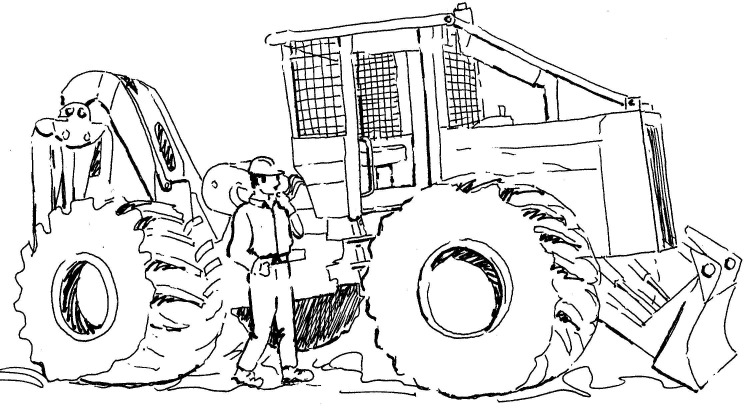
Service and maintain the unit according to manufacturer’s instructions, including all guards, screens, shields, and doors. Regularly clean the unit to remove accumulated debris.
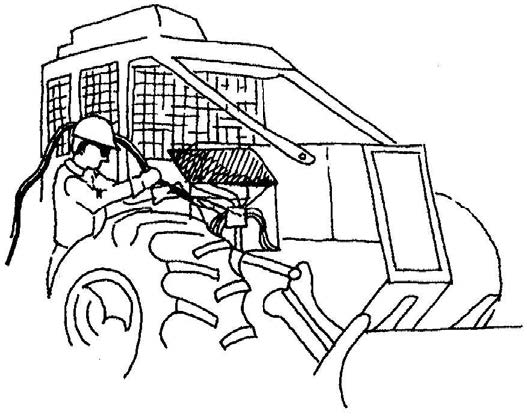
Keep skidder clean! Maintain proper fire suppression equipment on unit at all times.
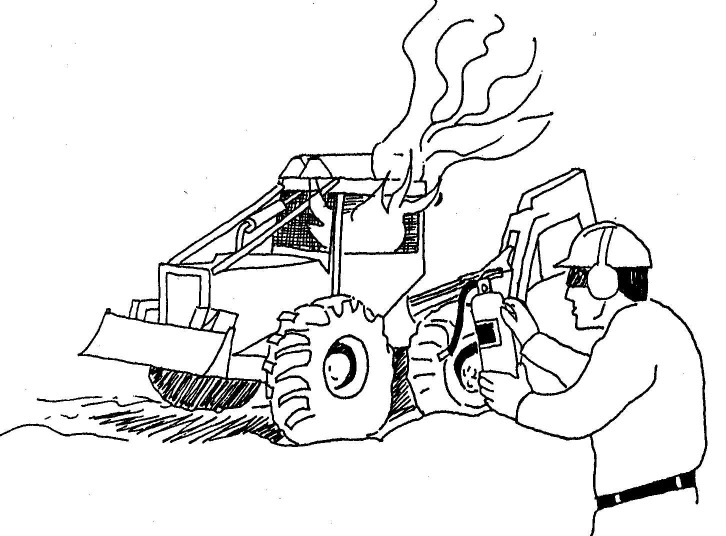
Use the seatbelt
Skidder operation should be performed only from the operator’s seat. Secure loose items in cab.
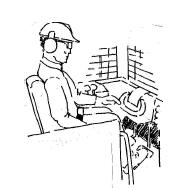
Always maintain 3-point contact when mounting or dismounting (both hands and foot or both feet and one hand).
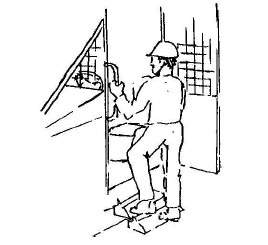
OPERATOR SAFETY TIPS
Familiarize yourself with the logging site before beginning the operation, noting timber distribution and size, ground conditions, terrain, and hazards.
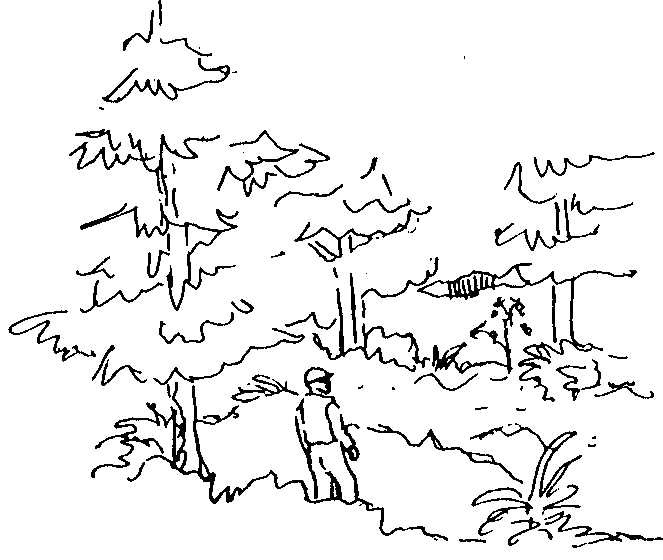
Ground the blade, set the brake, and disengage transmission before dismounting. Set chokers at butt end of log.
Wear proper gloves when handling cable.
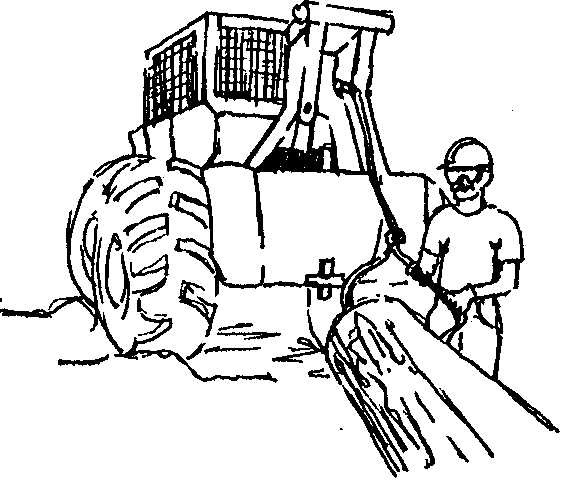
Winch load in straight line to avoid rollover.
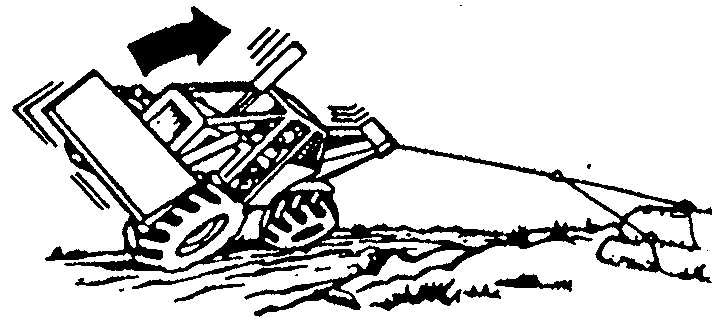
Operate up and down slopes where a rollover hazard exists.
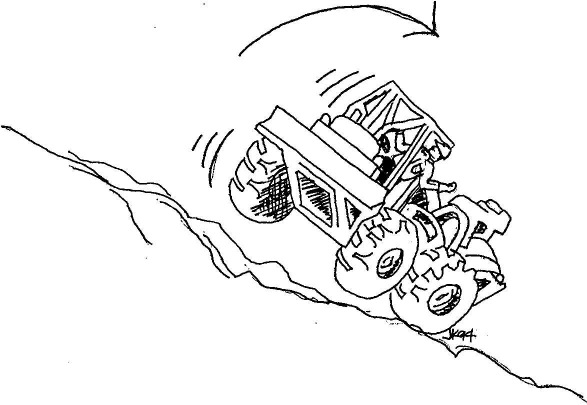
Push or pull lodged trees to the ground.
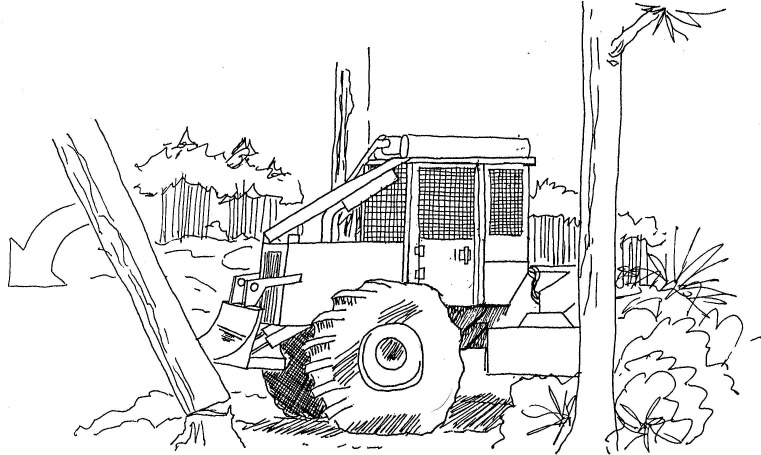
Maintain safe operating distances from other workers and operations.
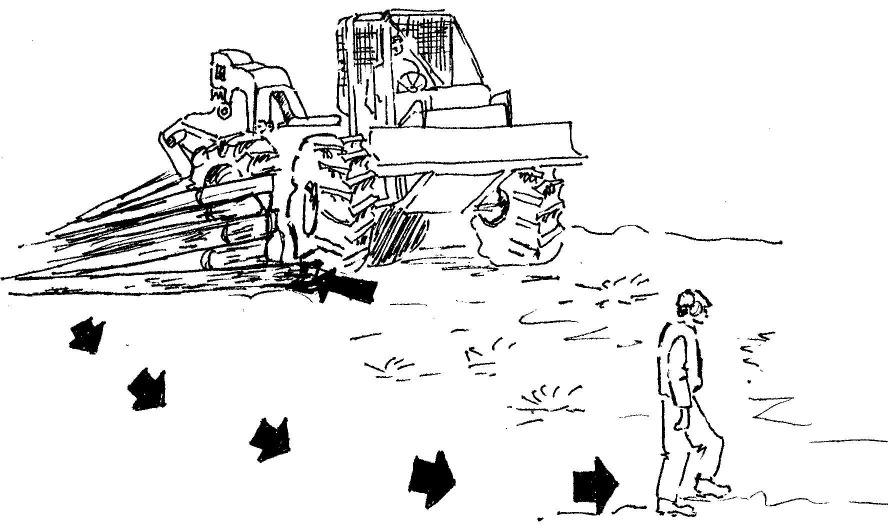
VISITORS
Never allow visitors, spectators, or unauthorized persons to be on or near any operation unless supervised.
Most visitors are not aware of hazards or dangers. They must be warned and wear proper protective equipment.
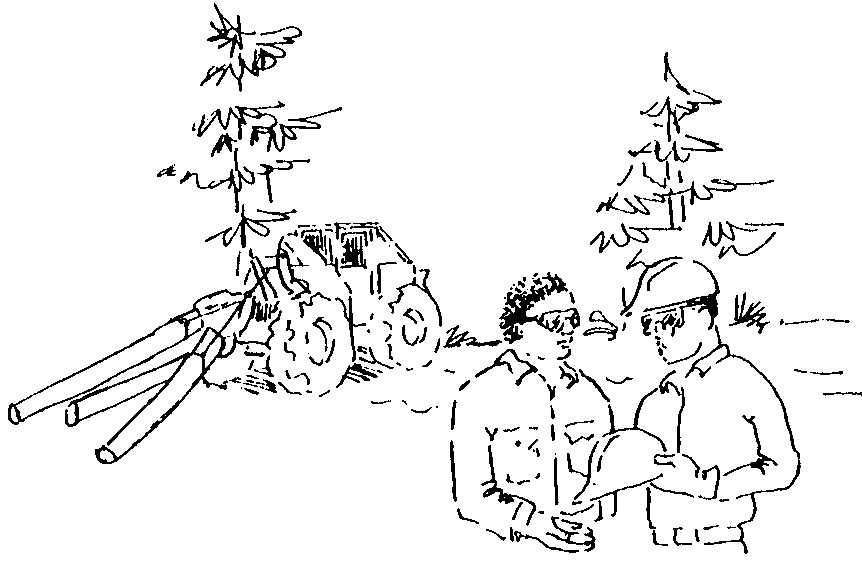
BE PROFESSIONAL – BE SAFE

Southwide Safety Committee Forest Resources Association Inc.
600 Jefferson Plaza,
Suite 350 Rockville, Maryland 20852
301/838-9385
www.forestresources.org www.loggingsafety.com


VEHICLE LOCKOUT PROCEDURES
| MACHINE NAME AND NUMBER: |
CIRCLE THE ENERGY SOURCES FOR THIS MACHINE ELECTRICAL MECHANICAL GRAVITY |
AUTHORIZED EMPLOYEE – LOCKOUT PROCEDURES
|
RESTORING MACHINE TO NORMAL OPERATIONS
|
ADDITIONAL SAFETY FEATURES
|
Virginia Cooperative Extension materials are available for public use, reprint, or citation without further permission, provided the use includes credit to the author and to Virginia Cooperative Extension, Virginia Tech, and Virginia State University.
Virginia Cooperative Extension is a partnership of Virginia Tech, Virginia State University, the U.S. Department of Agriculture (USDA), and local governments, and is an equal opportunity employer. For the full non-discrimination statement, please visit ext.vt.edu/accessibility.
Publication Date
March 24, 2020



